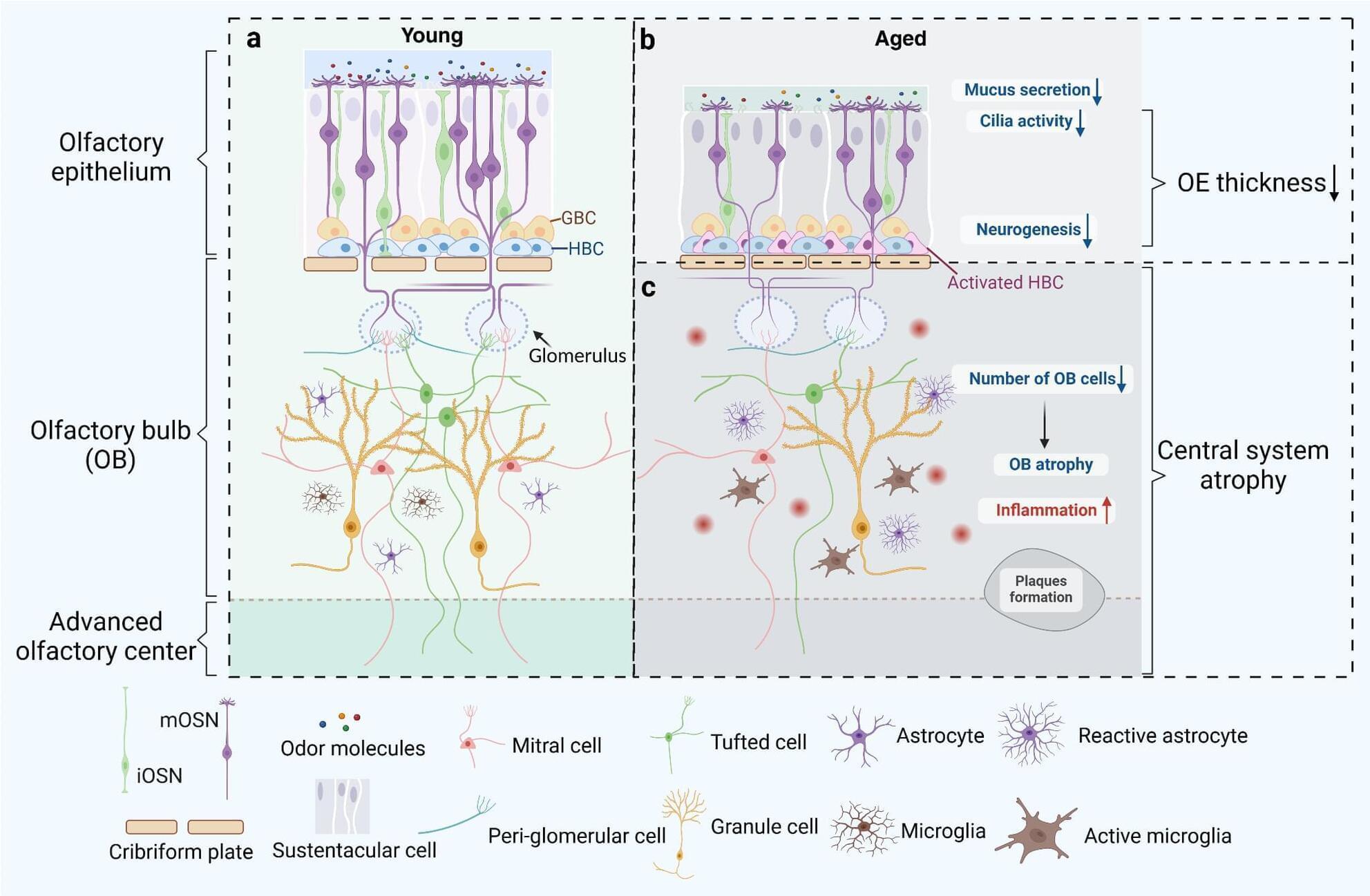Olfactory dysfunction (OD) is a common nasal disease, particularly prevalent among the elderly population, significantly impacting the affected individuals’ quality of life. This review focuses on the influence of aging and chronic inflammation on olfactory dysfunction, presenting insights from both the peripheral and central olfactory systems. By exploring the molecular mechanisms and pathological changes underlying the occurrence of olfactory dysfunction in relation to age-related diseases and chronic inflammation conditions, we aim to provide a comprehensive theoretical foundation for further research and offer valuable insights for more effective treatment of olfactory dysfunction.

TOXIC EFFECTS OF NANOPARTICLES
Carbon nanotubes cause inflammation in the olfactory bulb. Promotes ROS formation, increases oxidative stress, inhibits cell proliferation, apoptosis.
Silver NPs increase oxidative stress and decrease the anti-oxidation capacity of the antioxidative enzymes in frontal cortex and hippocampus of mice.
Titanium oxide NPs induce oxidative stress, neuroinflammation, genotoxicity, neurotransmitters dysregulation, disrupted signaling pathways, and plasticity of the synapse.
Iron oxide NPs cause neuroinflammation, apoptosis, and immune cell infiltration have been reported as a side effect of exposure to iron oxide nanoparticles.
Silica causes cognitive dysfunction impairment, synaptic changes, an increase in oxidative stress, and microglial function alteration.
Organic NPs — depending on dose causes inflammation, oxidative stress, neuronal apoptosis, and accumulation in the frontal cortex.